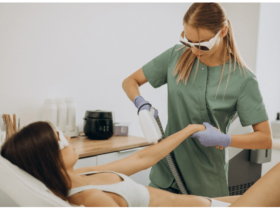Introduction
Accidents happen, especially in the lively world of children. Being prepared for pediatric dental emergencies empowers parents to provide swift and effective care when it matters most. From a knocked-out tooth to sudden oral pain, knowing how to respond can make a significant difference in preserving your child’s oral health.
Understanding Common Pediatric Dental Emergencies
Knocked-Out Tooth: Act Fast for Tooth Preservation
A knocked-out tooth is a time-sensitive emergency. If your child experiences this, retrieve the tooth without touching the root, gently rinse it, and try to reinsert it into the socket. If that’s not possible, place it in a container of milk or saliva and seek immediate dental attention. Quick action increases the chances of saving the tooth.
Toothache: Soothing Pain and Identifying Causes
Persistent toothache requires prompt attention. Clean the area around the affected tooth, rinse the mouth with warm water, and use a cold compress to alleviate swelling. Avoid placing aspirin directly on the gums. Schedule an emergency dental visit to identify and address the underlying cause of the pain.
First Aid at Home: Handling Minor Injuries
Cuts and Bites: Gentle Cleaning and Disinfection
In the case of cuts or bites to the lips, tongue, or inner cheeks, clean the area with a mild solution of salt and water. Apply a clean cloth or gauze to control bleeding and, if necessary, use a cold compress to reduce swelling. If bleeding persists or the wound is severe, seek immediate medical attention.
Object Lodged in Teeth: Approach with Caution
If an object becomes lodged between your child’s teeth, avoid using sharp tools to remove it. Instead, attempt to gently floss around the object. If unsuccessful, consult a pediatric dentist. Avoid using excessive force, as it may cause further damage.
Building a Pediatric Dental Emergency Kit
Essentials for On-the-Go Care
As a proactive measure, assemble a pediatric dental emergency kit. Include items such as sterile gauze, a small container with a lid, a cold compress, and an emergency contact card with your dentist’s information. Having this kit on hand can make a significant difference in managing dental emergencies promptly.
Emergency Contact Information: Your Lifeline
Keep your pediatric dentist’s emergency contact information readily available. In moments of crisis, having a direct line of communication with your child’s dental care provider ensures timely guidance and support.
Conclusion
Empowering parents to handle pediatric dental emergencies is essential for safeguarding children’s oral health. By staying informed, assembling a dental emergency kit, and knowing when to seek professional help, parents become crucial first responders in preserving their child’s bright and healthy smile. Preparedness is key, and with the right knowledge, parents can navigate dental emergencies with confidence and composure.







